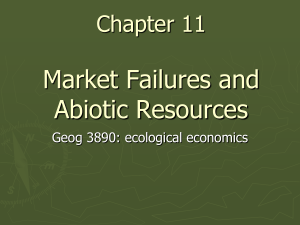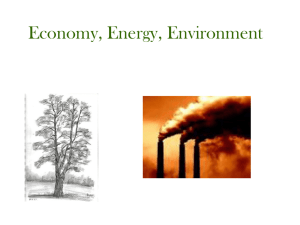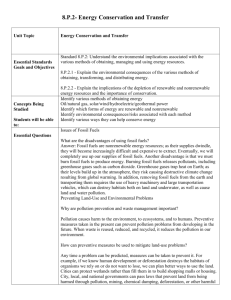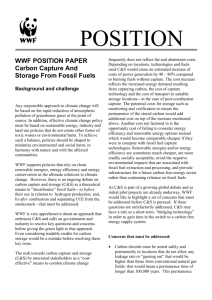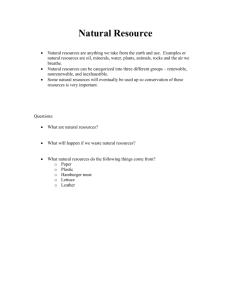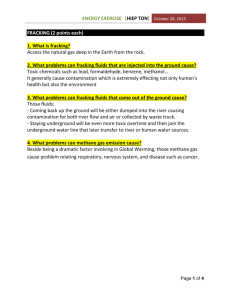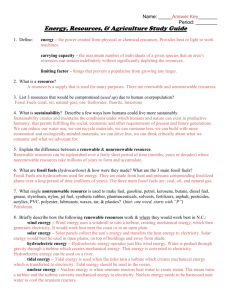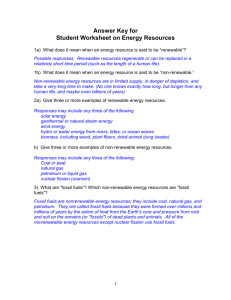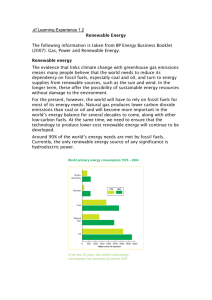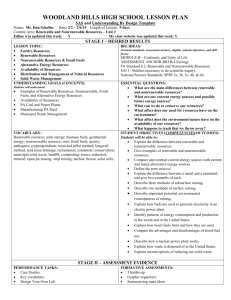Eng 11 - renewable energy
advertisement
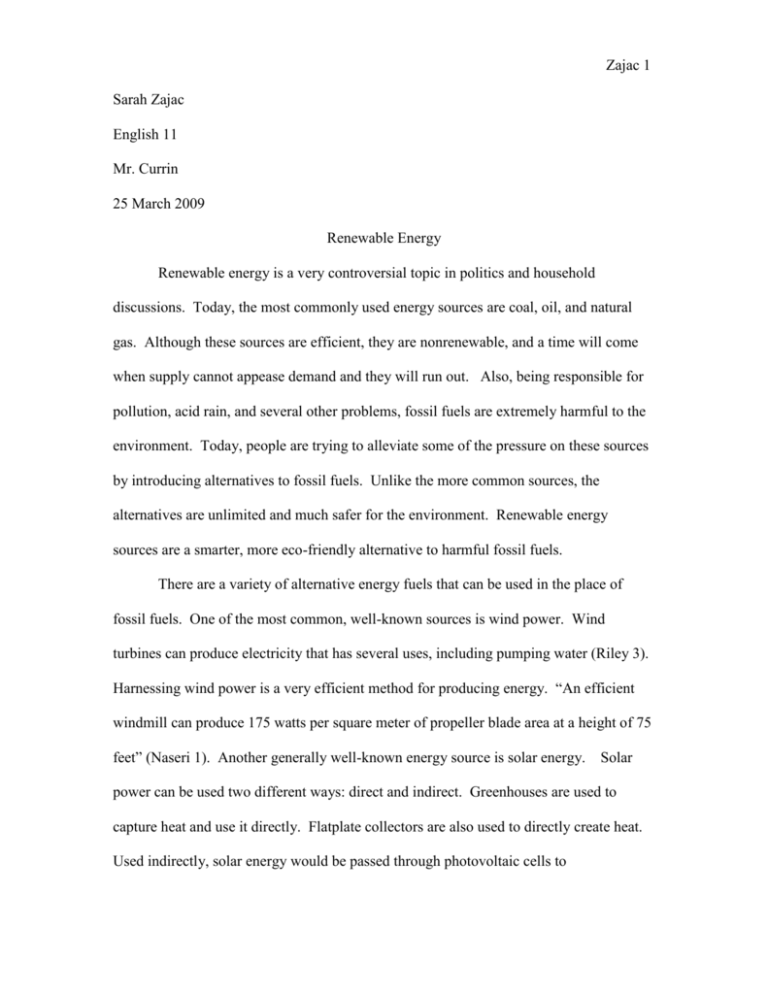
Zajac 1 Sarah Zajac English 11 Mr. Currin 25 March 2009 Renewable Energy Renewable energy is a very controversial topic in politics and household discussions. Today, the most commonly used energy sources are coal, oil, and natural gas. Although these sources are efficient, they are nonrenewable, and a time will come when supply cannot appease demand and they will run out. Also, being responsible for pollution, acid rain, and several other problems, fossil fuels are extremely harmful to the environment. Today, people are trying to alleviate some of the pressure on these sources by introducing alternatives to fossil fuels. Unlike the more common sources, the alternatives are unlimited and much safer for the environment. Renewable energy sources are a smarter, more eco-friendly alternative to harmful fossil fuels. There are a variety of alternative energy fuels that can be used in the place of fossil fuels. One of the most common, well-known sources is wind power. Wind turbines can produce electricity that has several uses, including pumping water (Riley 3). Harnessing wind power is a very efficient method for producing energy. “An efficient windmill can produce 175 watts per square meter of propeller blade area at a height of 75 feet” (Naseri 1). Another generally well-known energy source is solar energy. Solar power can be used two different ways: direct and indirect. Greenhouses are used to capture heat and use it directly. Flatplate collectors are also used to directly create heat. Used indirectly, solar energy would be passed through photovoltaic cells to Zajac 2 convert the heat to electricity. This method has a 14% efficiency (Naseri 1). Although nuclear energy was unpopular because of the dangers that nuclear reactors posed, today, it is generally accepted as a positive alternative for energy production. It is more consistent than wind and solar energy, which is intermittent. Also, nuclear energy already provides 20% of power in America. As Georgia Republican Senator Johnny Isakson put it, “We’re sitting on a ham sandwich, starving to death” (Grunwald 1). Hydrogen is also another source of energy, mostly as an alternative to petroleum for transportation. It is also an advantage over battery-powered cars because they only take a few minutes to refuel, whereas a battery takes several hours (Mouawad 2). A few other remote energy sources are geothermal energy, which uses natural heat from the Earth’s interior, tidal power and ocean thermal energy conversion, which both utilize the powers of the ocean’s tides and temperature, biomass, which uses the production of trees into wood to produce energy, and magnetohydrodynamics, which uses a strong magnetic field to produce energy (Naseri 2). Many people think that natural resources are unlimited. This, however, is very untrue. Dohn Riley explains the dangers of relying too heavily on nonrenewable resources: The supply of these fuels is limited, and they pollute the environment. It is necessary to accelerate the development and adoption of renewable energy sources such as solar and wind power. Because some experts are predicting the world oil supply could be depleted within a few decades, it is imperative to begin transitioning to renewable energy sources now to avoid massive economic disruption caused by a global energy crisis. (1) Zajac 3 Today, energy demands are greater than they have ever been, and our natural resources are being quickly depleted. In 1997, America alone used 28% of the world’s total production of natural gas. “Many geologists anticipate an oil supply crisis sometime within the next two decades when global demand will exceed supply” (Riley 2). Inexpensive oil is being used up by industry carelessly, which will ultimately lead to an oil shortage. Already, industry has used up about 90% of the world’s crude oil supply (Riley 2). With such reckless usage trends, soon, there will not be enough resources to go around. The only solution to this is to wean industry off of these nonrenewable resources and switch to renewable energy. The main problem with fossil fuels is their harmful effects on the environment and on human health. Coal, one of the leading energy sources of the world, is a major factor in ecological problems, mainly air pollution. It is responsible for 43% of annual carbon emissions. According to atmospheric scientists, there are large clouds of dust particulates and sulfur over Asia and the United States’ west coast. Processing coal has lead to numerous problems such as acid rain and greenhouse gas emissions. Not only has it taken a toll on the environment, but it also has a profound effect on the health of the human race. Chemicals released by the burning of fossil fuels can cause cancer, brain and nerve damage, birth defects, lung injury, and breathing problems (Riley 2). When it comes to alternatives to harmful fossil fuels, there is an extensive list from which one can choose. The resources currently in use are being depleted and cannot meet the demand for energy. Renewable energy is safer for the environment and human health. In order to prevent an energy crisis and protect the environment from further harm, it is necessary for the world to switch from fossil fuels to renewable energy.
